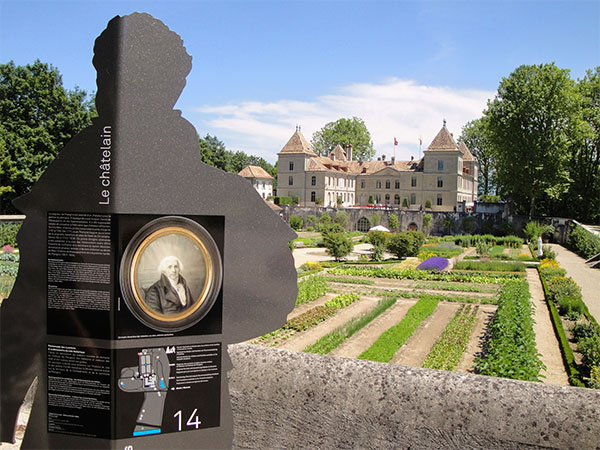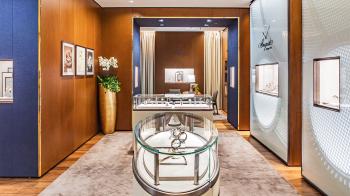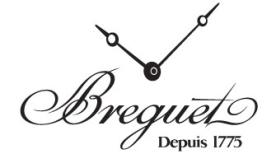On the 3rd of October 2018 the House of Breguet inaugurates a brand new boutique in Moscow, located within close proximity to the Kremlin, in the prestigious shopping mall GUM. It is in this boutique, under the high arches of the historical building, that Breguet chose to set up a dedicated exhibition area to display a curated edit from the Paris Museum collection.
Constantly enriched with new acquisitions, the Breguet Museum located on the upper floor of its flagship boutique, on Place Vendôme in Paris, displays around 100 objects out of more than 200 heritage pieces in possession of the House of Breguet. Focusing principally on the work of the founder, Abraham-Louis Breguet, the collection boasts items that illustrate the firm’s history from 1775 to today. It is the largest permanent exhibition of Breguet pieces in the world, with additional artefacts from the Museum collection on display in dedicated spaces at Breguet boutiques in Zurich and Shanghai, and, from October 2018, in Moscow.

The House of Breguet possesses most fascinating pieces, including three historical tourbillon pocket watches from the early nineteenth century. The invention of the tourbillon mechanism by Breguet in 1801 cemented the watchmaker’s standing as one of the most innovative figures of all time.
Breguet masterpieces in European Museums
The brilliant nature of the works of Abraham-Louis Breguet attracted illustrious personalities from very early on. In the 1780s, when his career was only beginning, Marie-Antoinette and the Duc d’Orléans became among the earliest collectors of his works. Today, Breguet is the only single watchmaker to be honoured by several of the world’s premier museums, such as the Louvre, the Kremlin, the British Museum and the swiss National Museum to name a few.

Musée des Arts et Métiers, Paris
The famous Musée des Arts et Métiers in Paris explores the Breguet family’s inventions over two centuries, from watchmaking to electricity and aviation.
British engineer and collector Sir David Lionel Salomons presented this museum with the Breguet masterpiece No. 92. Made by Breguet for his friend the Duc de Praslin, it is a piece with two faces and many complications.
Another remarkable object to be found here, is the Breguet wall clock No. 3177 sold to King Louis XVIII in 1821. This clock with two dials, two movements and two pendulums swinging in opposite directions was exhibited by Breguet at the great industrial exhibition of 1819, demonstrating the advances achieved in the various branches of French industry. Breguet was obliged to exhibit out of competition by virtue of the fact that he had been invited to sit on the jury.
Le Louvre, Paris
As the inventor of the gong spring and a number of striking mechanisms, Abraham-louis Breguet was the father of modern repeating watches. A few of his quarter-repeaters can be viewed in this world-famous museum, however one of the most spectacular Breguet repeating watches from the Louvre collection can be viewed at The Château de Fontainebleau. This timepiece No. 2585, a half-quarter repeating watch with complications, used to belong to Prince Camille Borghèse, the Governor of Piedmont, who was married to Pauline Bonaparte.

The Swiss National Museum, Le Château de Prangins
The tapestry of Breguet’s life and career is easily seen as both a Swiss and French composition, with neither able to be isolated or extricated from another. Among the highlights of the swiss National Museum in the Château de Prangins is the Breguet travel clock No. 178, purchased in 1798 by Napoleon Bonaparte as part of his equipment, a month before he began his Egyptian campaign. This clock anticipated in both its technical and its aesthetic aspects, the general appearance of virtually all carriage clocks produced in France throughout the nineteenth century and into the beginning of the twentieth.
The institutions in possessions of significant collections of Breguet watches and clocks are numerous. However, the majority of early creations still remain in the hands of private collectors.
For example, the Sympathique clock No. 666 and watch No. 721 acquired by the future King George IV of England is owned today by H.M. Queen Elizabeth and is used by H.R.H. Prince Philip, Duke of Edinburgh. The clock was designed to hold the watch which, when placed in a recess, was automatically adjusted and reset. The term “sympathique” was chosen by Breguet to express the notion of harmony and “sympathy” between the two objects. The Sympathique clock remained very complex to make. All five examples, each different, that Abraham-Louis Breguet sold before his death in 1823, were bought by Kings or Princes. When his grandson Louis-Clément Breguet took over the reins of the firm in 1833, succeeding his father, he lost no time in patenting the sympathique clock endowing it with a new rewinding function.




